Is your customer success team constantly drowning in a tidal wave of support tickets? Are users bringing the same issues over and over again that could’ve been solved by reading a help doc, watching a tutorial, or going through an onboarding tour?
That’s when you know you need to provide self-serve support. It frees your team from repetitive customer support tasks and offers your customers a better product experience overall. So where do you go to find the tools for this?
In this article, we’ll provide you with a brief list of the best tools for self-serve customer support, so that you can get started right away.
What is self-serve customer support?
Ever went to restaurants where the drinks were self-serve? There’s a stack of cups, and you can pour yourself beverages as much as you’d like. Self-serve customer support is exactly that. It enables your customers to resolve issues on their own.
As a simple example, FAQ pages are one of the most widely used methods of self-serve customer support. With these, you can address issues that users may commonly run into by providing answers ahead of time and making it accessible to users.
What is not self-serve?
Self-serve is when the customer is able to find product-related answers themselves. Once a team member is involved in helping a customer, it is no longer self-serve.
For instance, a help desk software is not a self-serve customer support tool, because you still need a member of your team to come in and resolve the ticket. Even if the help desk tool lets you solve the problem at blistering speed, it’s still not self-serve.
The benefits of providing self-serve customer support
There are numerous benefits to being able to provide self-serve customer support. A big one is ticket deflection.
For example, one of our customers, AvidXchange, was able to deflect 20,000 tickets in one year by using Chameleon to provide an additional layer of self-serve support for their product.
If we do the math here – say that each ticket takes 15 minutes to resolve, it would result in approximately 5,000 hours of customer support time, which is around 208 days. That’s a lot of time saved!
The other core benefit is that self-serve is much faster in terms of response time, because the customer is resolving the issue themselves. There would be no need to wait for CS managers to rescue them like a damsel in distress. Thus, it improves user experience and as a result, customer satisfaction.
Now that we have covered what self-serve customer support is and why it’s so important, it’s time to walk you through the different categories of tools you can use to offer self-serve support:
User onboarding tools
Knowledge base software
Live chat tools
Community forum software
User Onboarding software
Great self-serve support starts with thorough and effective customer education. That means your user onboarding is where self-service truly begins. The more informed a new user is, the fewer issues they will have.
In-app messaging is a great way to keep users on track and help them within the right context in a timely manner. If a user is lost, rather than going to a help page for info, a well-placed tooltip would be much more effective at moving them along.
Let’s take a closer look at tools you can use for this purpose.
Chameleon
Chameleon is a no-code tool that allows you to create onboarding flows and various other in-product experiences that drive product adoption. From on-brand styling to contextual triggering to custom user segmentation, you’ll be able to quickly configure the flows and adjust them to your user journeys.
Our core products include:
Tours: for building user onboarding flows and contextual feature guidance
Tooltips: for giving additional information when and where users need it the most
Microsurveys: for gathering relevant in-app user feedback easily
Launchers: for making highly versatile in-app onboarding checklists and help menus
Here’s an example of what creating an onboarding Tour would look like with Chameleon’s Builder.
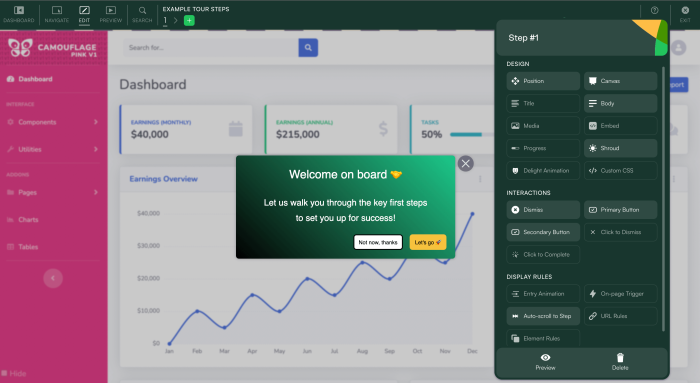
Pricing:
Startup Plan starting at $279/month
Growth Plan starting at $999/month
Enterprise plans at custom pricing
Appcues
Appcues is widely known as the grandfather of no-code user onboarding software. They’ve been around for a while and have evolved into a broad suite of features that enable you to create in-app messages and user onboarding flows.
As one of the firstcomers in the space, they offer good customer support and their product is enjoyed by a wide variety of customers. So do consider them in your search.
Here’s an example of an in-app message built with Appcues.
Pricing:
Essentials: starting at $299/month
Growth: starting at $879/month
Enterprise: get a custom quote
Knowledge base software
Knowledge bases are centralized libraries of product information easily accessible to users. If they are blocked they need a place where they can find the answer easily. A knowledge base does exactly that. It lets your users become much more self-sufficient.
Zendesk
As a leading platform for customer support, Zendesk provides help center software that lets teams create knowledge bases for self-service. It comes as a part of their suite of tools, so see if you need their smorgasbord of customer support features such as its flagship ticketing system and its live chat feature – which is why many enterprise customers use Zendesk to power their knowledge bases.
Here’s an example of what the knowledge base from Riot Games looks like, built with Zendesk.
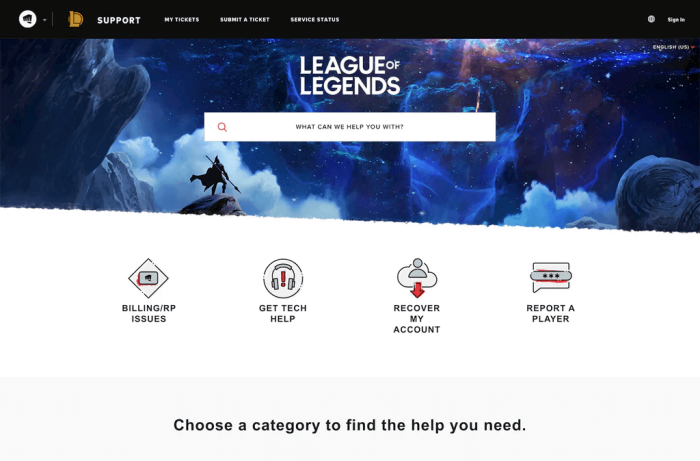
Pricing:
Suite Team - $49 /user/month
Suite Growth Professional - $79/user/month
Suite Professional - $99/user/month
Help Scout
Help Scout is another widely known platform for customer support solutions. Alongside its email inbox features, customer ticketing tools, and live chat, Help Scout lets you create help centers in the form of Docs, Help Scout’s knowledge base feature. They can be styled to match your brand, and they work on any device. As with Zendesk, it is offered as a part of a suite of customer support tools.
Here is an example of Help Scout’s knowledge center.
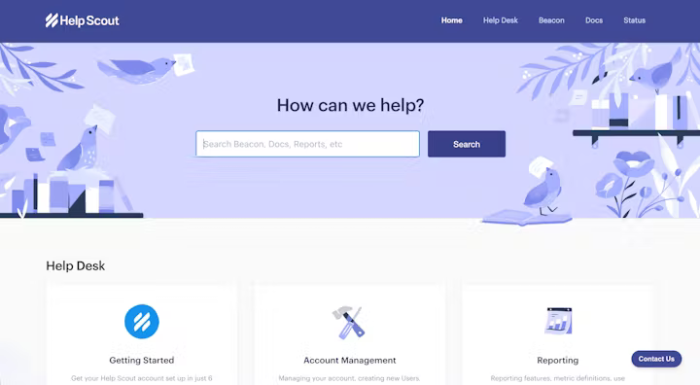
Pricing:
Standard at $20 /user/month
Plus at $40/user/month
Pro at $65/user/month
Stonly
Stonly is a dedicated self-serve guide software that allows you to set up interactive guides for various customer issues under a branded knowledge base. While its knowledge base is not too distinct from other solutions, where Stonly truly stands out is how it allows you to create modular multimedia guides instead of static pages of text. If you want to deliver better customer guides than your standard articles stored in a knowledge base, Stonly could be a good tool for you.
Below is an example of a log-in guide made with Stonly.
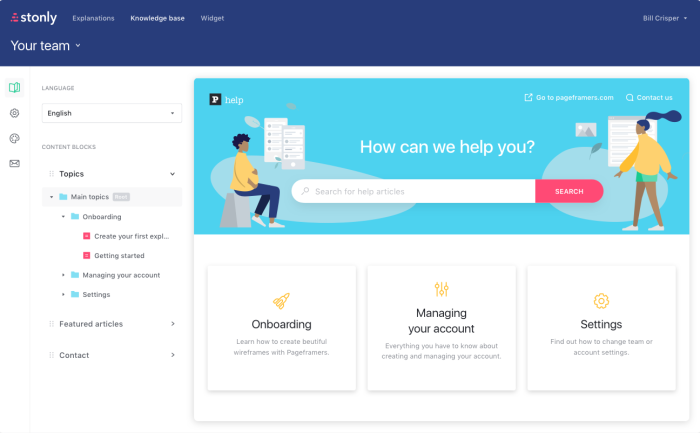
Pricing:
Starter at $99/Mo
Standard at $199/Mo
Custom pricing for Enterprise
Live chat software
Gone are the days when you had to email and wait for hours for an answer on a support ticket, or worse, call and listen to elevator music for hours until you could get someone to resolve your issue. With live chat and other contact center technologies, your customers can have access to your support team instantly.
Intercom
Intercom is one of the most widely used customer communication solutions. In fact, its widget in the right lower corner is iconic. You can often easily recognize who is using an Intercom live chat.
It has come a long way now, and Intercom has evolved into a whole suite of tools. So make sure to check out the other features that come with the live chat function. It is a bit more on the pricey end, but if the whole platform of solution seems like something you can make great use of, go ahead by all means.
Here’s an example of Intercom’s live chat in action on Intercom’s landing page.
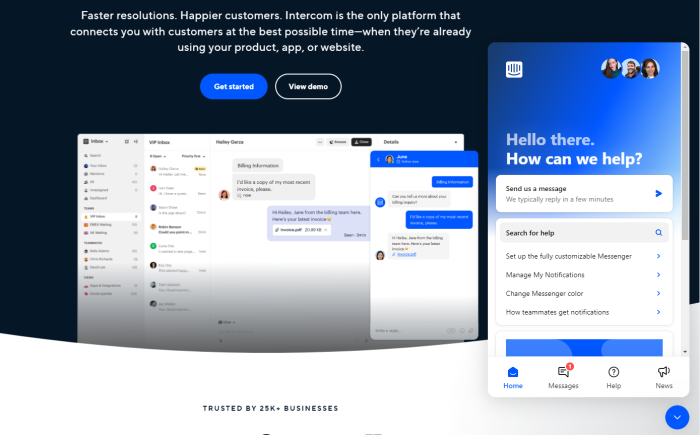
Pricing:
Pricing depends on how many seats you need and how many people you’ll be reaching. Contact sales for more details.
LiveChat
For those with a tighter budget, LiveChat might be the better option. It offers what it is named after, live chat, and also comes with various support tools for providing better customer service. It also comes with automation, chat transfers, and personalization among other features that enhance its live chat experience.
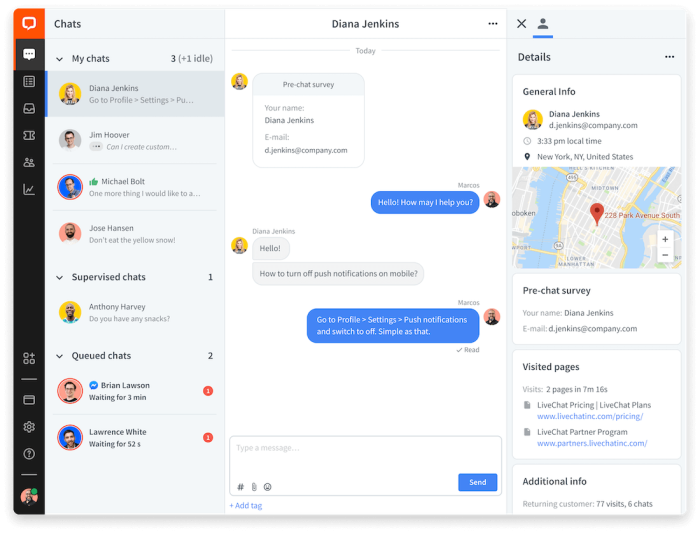
Pricing:
Starter at $20/mo/agent
Team at $41/mo/agent
Business at $59/mo/agent
Enterprise pricing is available
Olark
A lot of live chat software these days comes with quite a bit of bells and whistles or comes as a part of a suite, but if you want a dedicated live chat software then Olark could be the option. It’s got a ton of features that deliver strong live chat support like AI-powered automation, chat transcripts for your CRM, in-depth reporting, and more.
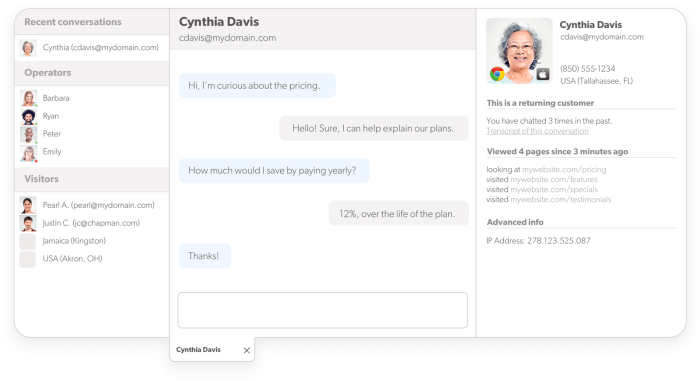
Pricing:
Starts at $29/mo/agent
Community forum software
Another way to provide answers to user queries is to have other users answer them. This is how community forums can be a part of a robust self-serve customer support stack. They can be information-sharing hubs, where more experienced users can educate others and resolve issues encountered by newer users.
Here are some great options when it comes to community forum tools.
Vanilla
Formerly known as Vanilla Forums, Vanilla is a popular online community software that allows you to launch a branded community forum for your product.
Below is an example of Vanilla’s builder UI.
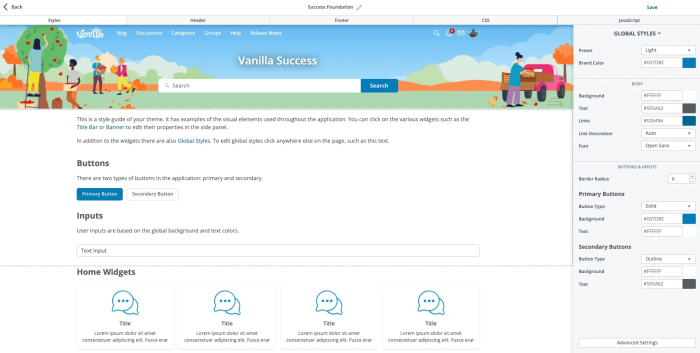
Pricing:
For Vanilla, you’ll have to book a demo or contact sales in order to find out more about their pricing.
Discourse
Discourse describes itself as a ‘modern internet discussion forum’. One of its key differentiators is that the forum conversations are not divided into pages. Instead, it loads into a long continuous page which streamlines the reading experience.
Other than that, it has various features that make it quite user-friendly. Here’s a demo of what forums made with their software could look like.
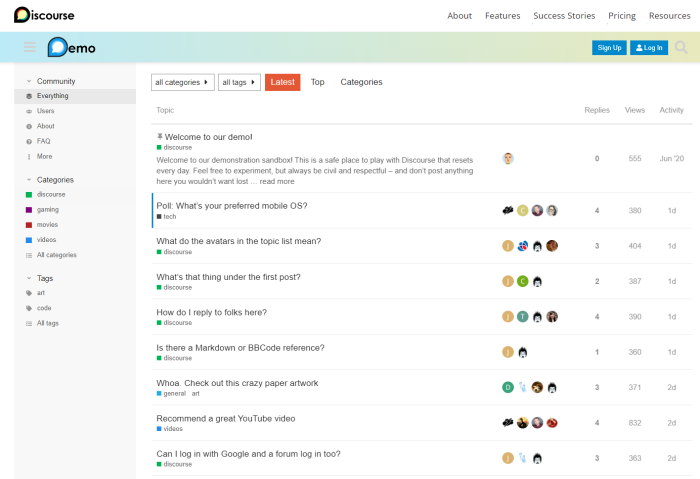
Pricing:
Basic at $25/mo
Standard at $100/mo
Business at $300/mo
Enterprise pricing available
Khoros
Khoros takes the concept of a community forum and supercharges it. A community built by Khoros feels more like a special space reserved for users of the brand, which is exactly what Khoros is going for. It also seems to be much better suited for organizations that need to launch a community at scale, which means Khoros caters more to enterprise brands.
Here is an example of the Samsung community space made with Khoros.
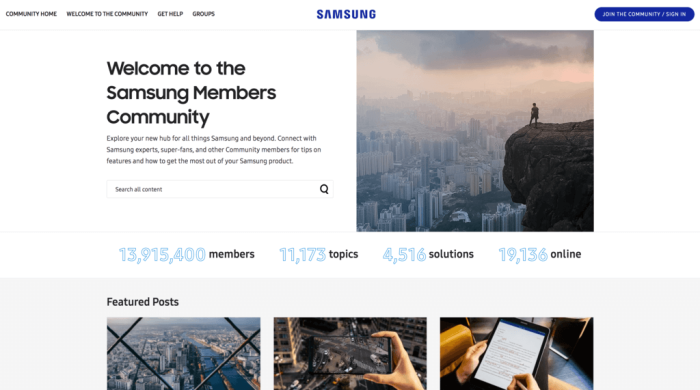
Pricing:
As with many enterprise-oriented tools, you’ll have to contact the Khoros team for more information on pricing.
Provide better self-service customer support to your users
Now that you’ve got your full list of self-service customer support tools, it’s time to actually put them into action. Try them, weigh the options, and see which ones feel right for you.
In a nutshell, self-serve could be a huge opportunity for you to scale up your customer support and provide a better user experience. It is definitely worth the investment.
And, as we mentioned above, Chameleon has quite a suite of tools for self-service customer support. Try it out for free or book a demo to see how it fits into your tech stack.
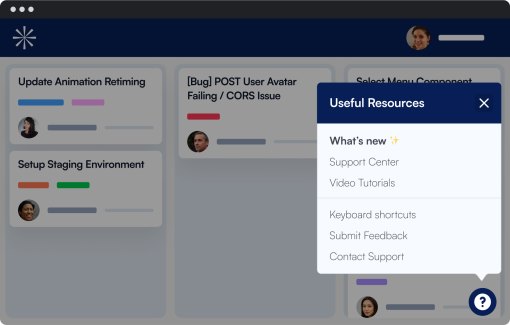
Save time and resources with self-serve
Quickly automate customer success and free your team from repetitive support tasks




